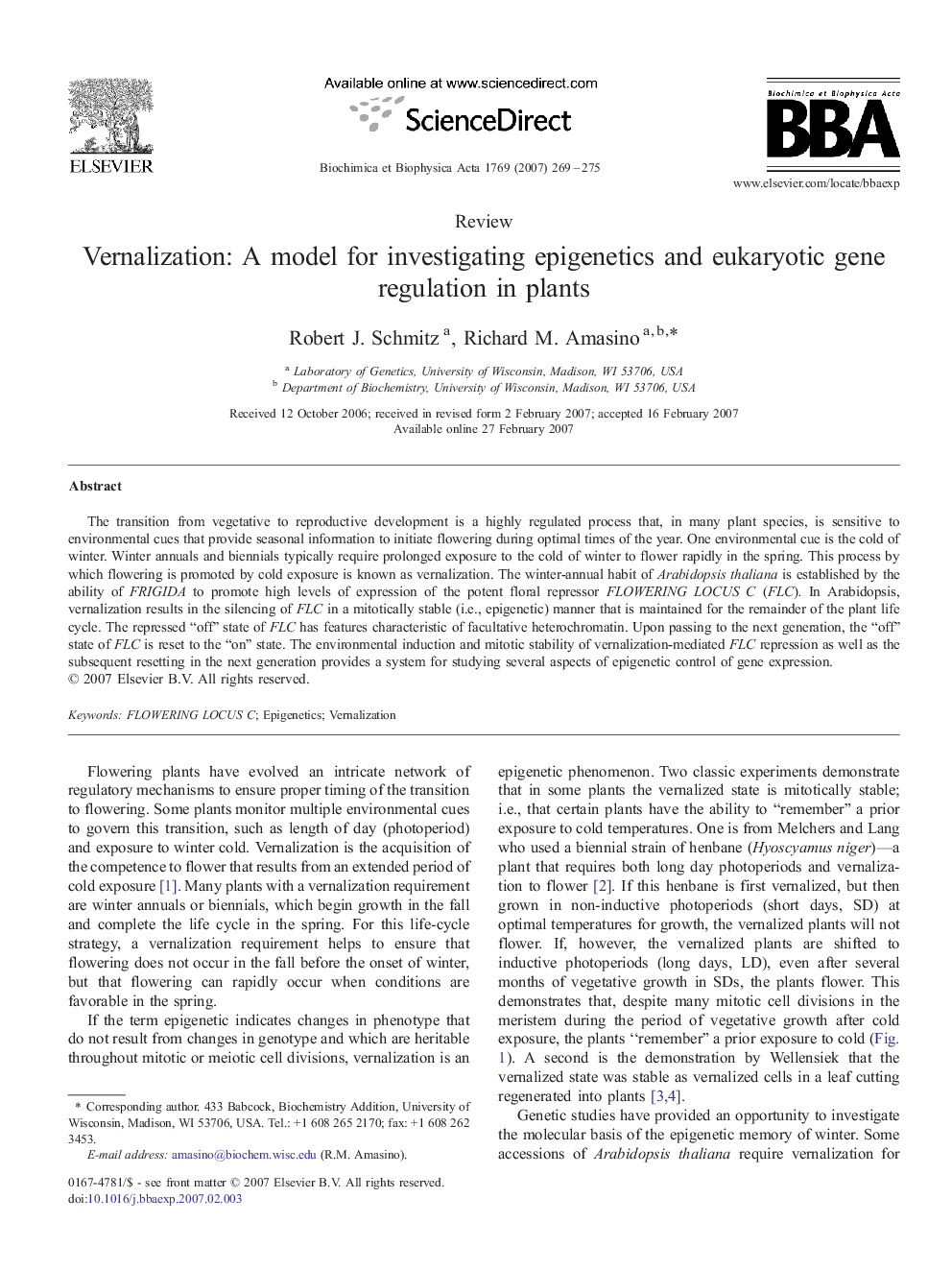| Article ID | Journal | Published Year | Pages | File Type |
|---|---|---|---|---|
| 1947099 | Biochimica et Biophysica Acta (BBA) - Gene Structure and Expression | 2007 | 7 Pages |
The transition from vegetative to reproductive development is a highly regulated process that, in many plant species, is sensitive to environmental cues that provide seasonal information to initiate flowering during optimal times of the year. One environmental cue is the cold of winter. Winter annuals and biennials typically require prolonged exposure to the cold of winter to flower rapidly in the spring. This process by which flowering is promoted by cold exposure is known as vernalization. The winter-annual habit of Arabidopsis thaliana is established by the ability of FRIGIDA to promote high levels of expression of the potent floral repressor FLOWERING LOCUS C (FLC). In Arabidopsis, vernalization results in the silencing of FLC in a mitotically stable (i.e., epigenetic) manner that is maintained for the remainder of the plant life cycle. The repressed “off” state of FLC has features characteristic of facultative heterochromatin. Upon passing to the next generation, the “off” state of FLC is reset to the “on” state. The environmental induction and mitotic stability of vernalization-mediated FLC repression as well as the subsequent resetting in the next generation provides a system for studying several aspects of epigenetic control of gene expression.
